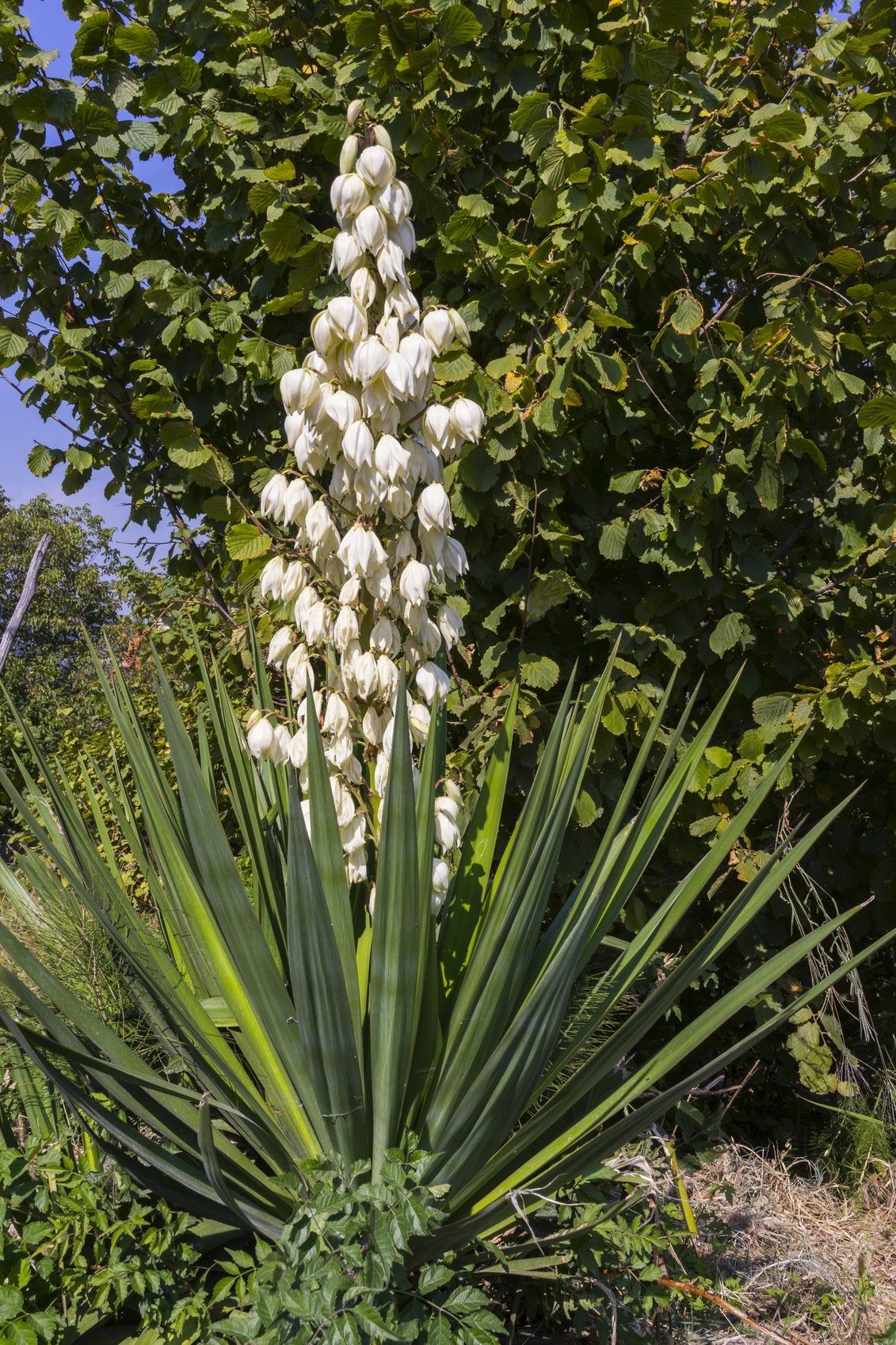The Yucca plant: A Resilient Symbol of the American Southwest
The yucca plant, with its spiky leaves and dramatic flower stalks, is an iconic symbol of the American Southwest. This genus of perennial shrubs and trees, belonging to the Asparagaceae family, boasts around 40-50 species, each uniquely adapted to thrive in diverse environments, from arid deserts to coastal regions.
Yucca plants are renowned for their distinctive appearance:

Rosettes of Leaves: A central rosette of evergreen, tough, sword-shaped leaves forms the foundation of the plant. These leaves can vary significantly in size and shape depending on the species, ranging from short and stout to long and slender.
The natural range of yucca plants spans a vast area of the Americas, extending from the southern United States through Mexico and into parts of Central America. They are particularly well-adapted to survive in challenging environments, including:
Deserts: Yuccas are remarkably drought-tolerant, thriving in arid and semi-arid regions with limited rainfall.

Yucca plants exhibit a fascinating ecological relationship with yucca moths (genus Tegeticula and Parategeticula). This relationship is an example of mutualism, where both organisms benefit from their interaction:
Pollination: Yucca moths are the primary pollinators of yucca plants. The female moth collects pollen from one yucca plant and carries it to another, where she lays her eggs within the plant’s ovary.
This intricate symbiotic relationship highlights the delicate balance of nature and the interdependence of species within ecosystems.
Yucca plants have been utilized by humans for centuries, serving various purposes:
Culinary Uses
Edible Parts: The young flower stalks and fruits of certain yucca species are edible. They can be cooked and eaten as a vegetable or used to make jams and jellies.
Medicinal Uses
Other Uses
Fiber: The strong fibers extracted from yucca leaves have been used to make ropes, baskets, and textiles.
Cultivating yucca plants can be rewarding for gardeners who appreciate their unique beauty and low-maintenance nature:
Soil and Sunlight: Yuccas prefer well-drained soil and full sun exposure.
The genus Yucca encompasses a wide variety of species, each with its own distinct characteristics:
Yucca filamentosa (Adam’s Needle)
This species is characterized by its long, slender leaves with thread-like filaments along the margins.
Yucca rostrata (Beaked Yucca)
This tree-like yucca is native to the Chihuahuan Desert and is known for its striking blue-green leaves and large, fragrant flowers.
Yucca brevifolia (Joshua Tree)
The Joshua Tree, a distinctive icon of the Mojave Desert, is a slow-growing tree yucca with a unique branching pattern.
Yucca aloifolia (Spanish Bayonet)
This species is known for its sharp, pointed leaves, which can cause injury if handled carelessly.
While many yucca species are relatively abundant, some face conservation challenges due to:
Habitat Loss: Urbanization, agriculture, and other human activities are leading to the loss of natural habitats for many yucca species.
The yucca plant, with its resilience, adaptability, and unique ecological significance, is a remarkable testament to the wonders of the natural world. From its role in supporting diverse ecosystems to its cultural and economic importance, the yucca continues to captivate and inspire. By understanding and appreciating these plants, we can better conserve their natural habitats and ensure their continued presence in the landscapes of the Americas for generations to come.


